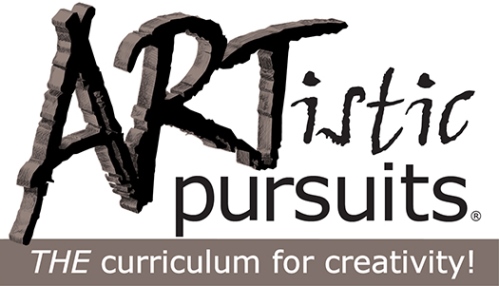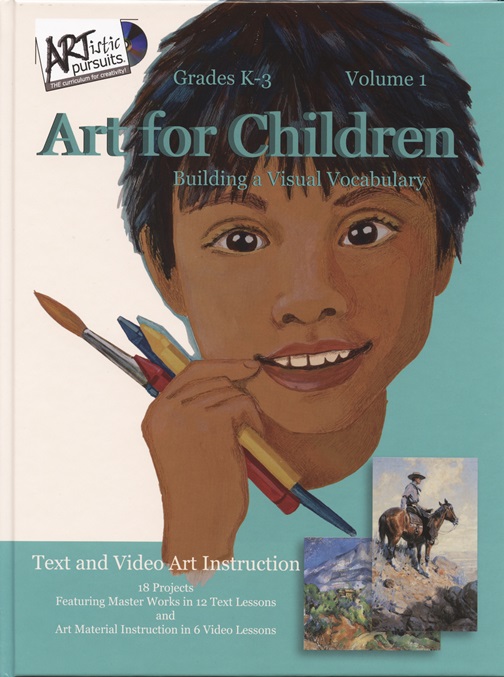


This set comes with one hardcover book and a DVD. It is written by Brenda Ellis. The book has 64 pages and contains 12 lessons with an additional 6 video lessons. It is designed for early elementary students. Lessons include vocabulary, and art material instructions, how to work with watercolor crayons, oil pastels, colored paper and more.
I set her up with the book and her first video lesson and let her go at it. She is a visual learner so video lessons tend to work well for her. I watched the first couple of lessons before she did and I found them to be interesting and easy to understand for her age and ability level.

The lessons cover things like how artists compose, watercolor crayons, identifying and mixing colors, oil pastels, texture, landscapes, animals, figures etc. I feel like the book covers a nice range of subjects and techniques for a beginning art book. I found the lesson on mixing colors helpful. This curriculum did require me to buy a few things that we did not have around the house. We needed watercolor crayons, oil pastels, watercolor paper ( printer paper is not good for watercolors trust me) I also bought her an ebony drawing pencil and watercolor brush pens. The watercolor brush pens were not on the list of materials but she likes them for adding water to her watercolor crayons to help blend the colors.
She said the lessons easy to follow and understand. She said some of the lessons went a little to fast and she couldn't keep up. I'm not sure she was supposed to actually keep up with the video. I felt like she was meant to watch the lesson then do the assignment from what she learned in the lesson. Once I explained that to her she seemed to do a little better and her pictures started coming out better. Overall I feel like it is a great program and she has truly enjoyed if and has really improved in her artwork.

Facebook: https://www.facebook.com/ArtisticPursuitsInc


Julie,
ReplyDeleteThank you for trying out our new program. Yes, the design of the videos is that they just watch the short 6 minute video, then are encouraged to get their own objects to observe and spend all the time they need to on their own work of art. Many children like to re-watch the video at a later time. We expect children to pick up some new piece of information each time they go through it. When children watch, absorb a piece of information, and then apply it to their work, they are learning, and they won't forget that piece. It's a different process from watching a video that they are expected to copy, but in the end children retain more information. Again thanks and I hope your daughter enjoys the rest of the book!